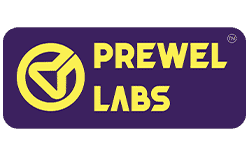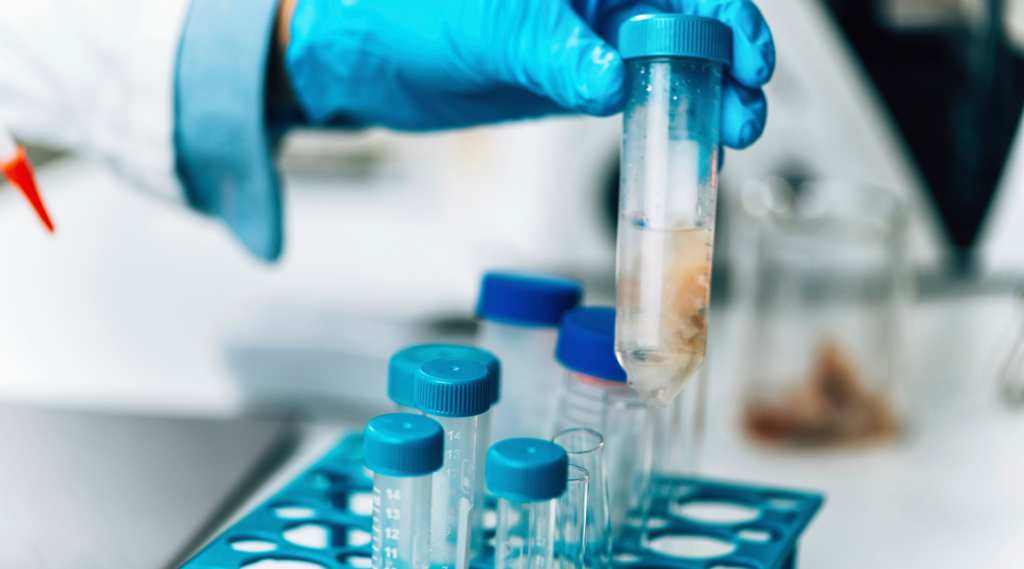Introduction to Pure Steam Quality Testing
Pure steam plays a crucial role in pharmaceutical industries due to its essential properties and applications in various processes that ensure the safety, efficacy, and quality of pharmaceutical products.
Definitions:
- Steam: The Vapour into which water is converted when heated, forming a white mist of minute water droplets in the air.
- Dry Steam: All water molecules are in the state of gaseous state.
- Wet Steam: A portion of the water molecules have lost their energy, latent heat and condensed a tiny water droplet.
- Saturated Steam: Water vapour in a state of equilibrium between its liquid phase and its gas phase.
- Super-Heated Steam: Super-heated steam is a form of steam at a temperature higher than its source liquids boiling point or vaporization point under a given pressure.
- Sterile: Condition of a medical device that is free from viable microorganisms.
- Sterilization: Validated process used to render a product free from viable micro organisms.
- Non-Condensable gases: Air and/or other gas which will not liquefy under the conditions of saturated steam sterilization process.
- Daltons Law: Daltons law (also called Daltons law of partial pressures) states that in a mixture of non-reacting gases, the total pressure exerted is equal to the sum of the partial pressures of the individual gases.
- Moist Heat Sterilization: It describes sterilization techniques that use hot water vapor as a sterilizing agent.Top of Form Bottom of Form
Overview of EN 285: 2015 Standard
Intended for Sterilization, Steam Sterilizers & large sterilizers (autoclaves > 60 L)
Compliance with the latest standard was required by EN 285:2015.
Key Parameters for Pure Steam Quality Testing in EN 285
Non-Condensable Gases (NCGs)
- These gases are primarily air and possibly CO
- Air will tend to build up within the system.
- In sufficient quantities of air will Hinder sterilization as it is a good insulator
- Due the Dalton’s law of pressures, the air will impact the temperature of saturated steam.
- Measured by condensing a sample of steam directly from the distribution system.
Sampling Procedure:
- Open the steam valve slowly, as there will an amount of air blown through the steel braided hose.
- Allow the system to adequately warm up and stabilise.
- Target a stable condensate temperature of 80 ºC so there is minimal need to adjust steam / cooling water flows during the test.
- Where small amounts of non-condensable gases are found, increase the volume of condensate collected.
- Where large amounts of non-condensable gases are found, start at the top of the burette.
- Acceptance Criteria: The volume of non-condensable gases should not exceed 3.5% of the steam volume.
Superheat Testing According to EN 285
- It’s just steam that is hotter than saturated steam at the same pressure.
- Super-heated steam will not generate condensate until the steam cools down to the saturated steam temperature. So, this will impact moist heat sterilization.
- More of an issue during short sterilization cycles.
- Measured by expanding steam from system to atmospheric pressure (Adiabatic de-pressurisation / expansion).
Measurement of Steam Temperature:
- Equipment needed: Calibrated thermocouples or resistance thermometers.
- As this test is an instantaneous measurement
- Ensure the thermometer is sensitive to quick changes in temperature.
- Allow the system to adequately warmup and stabilise.
- This is the simplest test of the three live steam tests.
- Acceptance Criteria: ≤ 25 ºC above boiling point of water.
Note: Steam pipe temperature within 3 ºC of Dryness Test.
Dryness Value Testing According to EN 285
- It’s just the ratio of moisture (liquid) in the steam (gas).
- Wet steam has less energy than saturated steam for a given mass. thus less energy available for sterilization.
- The excessive moisture from the wet steam may cause wet autoclave loads and sterility issues.
- Measured by calorimetry, using steam to heat up a known mass of water.
Measurement Techniques:
- Read the instructions carefully and follow precisely.
- Practice technique, ensure the flask in dry prior to use.
- Observe the emitted steam prior to the test.
- Focus on a consist method for all tests, including starting points (i.e., Flask water temperature)
- The actual tests should take some time around 30 minutes.
- The temperature loss factor in the equation will not account for all heat lost during tests with extended durations.
Acceptance Criteria:
The dryness value should be at least 0.95 (95% steam, 5% water).
Note: Steam pipe temperature within 3 ºC of Superheat Test
Safety Instructions:
- Do not touch any part of the equipment that may be hot, without suitable protection (gloves are provided)
- Operators must satisfy themselves that before any service is turned on; all connections are secure and water/steam tight to prevent any leakage.
- Operators must satisfy themselves that before disconnection of any pipe, all services have been isolated and that all parts of the apparatus have cooled to a safe level and that no internal pressures are present.
- Operators should ensure that the steam-restricting valve on the non-condensable apparatus is opened cautiously to prevent escape of hot water or steam into the atmosphere.
- Operators should ensure that no leakage of liquids is allowed onto the surfaces of any electrical equipment, in particular the input sockets of the dual input thermometer. Care should be taken to prevent tracking of water down the probes to the instrument.
- The operator must read and follow any third-party manufacturer instruction before use. Maintenance of the equipment should be undertaken by qualified personnel only.
- Further bracing of the tripod may be required to secure any equipment supported on it. If the equipment is used in areas where other personnel or public are present, suitable signs should be displayed.
- The condensate sample temperature from the non-Condensable gas condenser should be controlled at a minimum of 80oC and a maximum of 95oC during sampling.
Importance of Pure Steam in Pharmaceutical and Medical Device Manufacturing
Here are some key roles of pure steam in the pharmaceutical industry:
Sterilization
Sterilization of Equipment and Instruments
Pure steam is used to sterilize equipment, instruments, and containers. Its ability to effectively kill microorganisms without leaving harmful residues is critical for maintaining aseptic conditions.
Autoclaving
Autoclaves use pure steam to sterilize surgical instruments, laboratory equipment, and pharmaceutical containers. The high temperature and pressure ensure the destruction of all forms of microbial life.
Cleaning and Sanitation
CIP (Clean-in-Place) Systems
Pure steam is used in CIP systems to clean and sanitize process equipment, piping, and tanks. The steam’s ability to reach high temperatures and penetrate all parts of the equipment ensures thorough cleaning.
SIP (Sterilization-in-Place) Systems
SIP systems use pure steam to sterilize the interior surfaces of processing equipment and piping without disassembly. This helps in maintaining sterile conditions during manufacturing.
Moist Heat Sterilization
- Sterilization of Culture Media and Solutions
Pure steam is used to sterilize culture media, solutions, and other liquid preparations. It ensures that these preparations are free from any microbial contamination.
- Steam Sterilization of Powders
Some pharmaceutical powders require sterilization using pure steam. The controlled application of pure steam ensures effective sterilization without altering the properties of the powder.
Humidification
Controlled Environment Rooms
- Pure steam is used to humidify controlled environment rooms, such as cleanrooms and production areas, to maintain appropriate humidity levels. This prevents the growth of microbes and ensures product quality.
- Pure steam is used to humidify controlled environment rooms, such as cleanrooms and production areas, to maintain appropriate humidity levels. This prevents the growth of microbes and ensures product quality.
Stability Chambers
- Stability chambers, where pharmaceutical products are tested for shelf-life, use pure steam to maintain precise humidity levels for accurate testing conditions.
- Stability chambers, where pharmaceutical products are tested for shelf-life, use pure steam to maintain precise humidity levels for accurate testing conditions.
Fermentation Processes
Sterilization of Fermenters and Bioreactors
- Pure steam is used to sterilize fermenters and bioreactors, which are critical for the production of antibiotics, vaccines, and other biopharmaceuticals. It ensures that the fermentation process starts in a sterile environment.
- Pure steam is used to sterilize fermenters and bioreactors, which are critical for the production of antibiotics, vaccines, and other biopharmaceuticals. It ensures that the fermentation process starts in a sterile environment.
Steam Sparging
- Steam sparging involves the direct injection of pure steam into the fermenter to maintain temperature and sterilize the contents during fermentation.
Preparation of Pure Steam Condensate
Water for Injection (WFI) Production
- Pure steam is condensed to produce Water for Injection (WFI), which is used in the formulation of parenteral products. WFI must meet stringent purity standards, and the use of pure steam ensures its quality.
- Pure steam is condensed to produce Water for Injection (WFI), which is used in the formulation of parenteral products. WFI must meet stringent purity standards, and the use of pure steam ensures its quality.
Heating and Cooling
- Process Heating
Pure steam is used for indirect heating in various pharmaceutical processes where contamination from direct steam contact must be avoided. It provides a reliable source of heat for processes like distillation and solvent recovery.
- Steam Tracing
Steam tracing involves using pure steam to maintain the temperature of pipes and equipment to prevent solidification of products or to ensure the flow of materials.
Environmental Control
- Decontamination of HVAC Systems
Pure steam is used to decontaminate HVAC systems, ensuring that the air supply to production areas remains sterile and free from microbial contamination.
- Decontamination of Isolators
Isolators used in aseptic processing are decontaminated with pure steam to maintain a sterile environment for the handling of sterile products.
About Prewel Labs
At Prewel Labs, we specialize in providing tailored testing solutions ensuring excellence in terms of its safety and quality. Our dedicated team collaborates closely with clients to understand their unique testing requirements and challenges. Leveraging state-of-the-art laboratories and adhering to the Good Laboratory Practice (GLP) standards, we deliver accurate and reliable results that surpass regulatory expectations. Whether it’s microbiological, chemical, or physical testing, we are committed to upholding the highest standards of reliable accuracy to safeguard consumer health and satisfaction.
Get in Touch with Us Today!
Fill out the form below and our team will reach out to you shortly.

